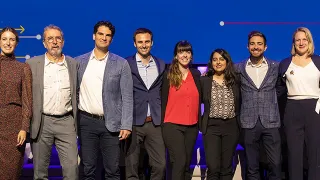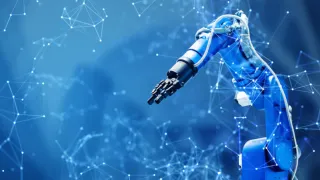
Circular Societies
Circular Societies: enabling economic growth and carbon-neutrality
A radical shift from a linear ‘brown’ to a circular, green economy is necessary for Europe to achieve carbon-neutrality by 2050. This circular society approach is widely accepted in Europe as an enabler of economic growth and development while simultaneously reducing carbon emissions and achieving the green transition. A successful pan-European transition to a circular society depends on the reliable and sustainable supply and management of raw materials. Raw, processed, and advanced materials from primary (mines) and secondary (recycled) sources are the backbones of the circular economy and society.
The loss of unused materials along the entire value chain is minimised in the circular society. End-of-life products are considered a resource to be used again. Industry and consumers alike embrace a ‘closing the loop’ approach.
The Circular Societies Lighthouse and Industry
Under the Circular Societies Lighthouse, EIT RawMaterials funds and supports innovation and education activities related to industrial symbiosis and end-of-life product recycling. Innovation in recycling and lifetime extension design, traceability, sustainability, and transparency along the supply chain is supported.
Industry is a critical player in the transition to a circular economy. Each industry sector is different regarding resource use, waste generation, and management. One of the innovation trends that the Lighthouse guides is industrial symbiosis – a collaborative approach across various industry sectors to resource efficiency and the recycling and re-use of waste.
Industrial symbiosis brings together organisations operating in different industry sectors to collaborate on the innovative re-use of waste and by-products. Business opportunities involving underused resources, including raw materials, energy, water, and more, are identified. This approach can be a key enabler of the shift to a circular economy.
The Lighthouse is implemented through EIT RawMaterials innovation activities. For example, the Raw Materials and Circular Societies Prize is offered to innovators and entrepreneurs with solutions for recovering crucial raw materials from secondary sources, i.e. recycling. Another innovation comes from an EIT-Label Masters programme graduate, Anna Vanderbruggen, who has invented technology that enables the recycling of graphite and other valuable metals from old batteries to be used in new lithium-ion batteries. She won the prestigious 2022 EIT Change award for this revolutionary research.
An EIT RawMaterials partner, Atlantic Copper, is investing in one of the most ambitious projects in the circular economy in Europe. The company is processing 60.000 tonnes of e-wastes in Huelva, Spain, to produce copper and other critical metals. This technologically advanced operation has achieved a remarkably low environmental footprint in terms of water use and carbon emissions.
Another EIT RawMaterials partner, the University of Liege, is driving the fantastic Reverse Metallurgy initiative. It is enabling companies in the Walloon region of Belgium to recover and re-use almost all of the valuable metals from their waste.
Other activities include the Booster Call for start-ups and SMEs innovating in closing the loop and specific Lighthouse calls for innovation projects.
The Circular Societies Lighthouse and Consumers
Consumers can also support, or hamper, the transition to a circular society with the choices they make purchasing products and recycling or re-using old products. Education and awareness raising is key to enabling consumers to support the green transition.
For example, in a recent report, the International Waste Electrical and Electronic Equipment (WEEE) Forum stated that in 2022, 5.3 billion mobile phones will be thrown away, meaning these products, as well as precious minerals like copper, are destroyed instead of being re-used.
This need not be the case. For example, ASmartWorld, a start-up supported in its early days by EIT RawMaterials Booster funding, now specialises in the collection, refurbishment and re-circulation of smartphones and tablets.
Another example is Ethikis, a winner of the 2022 EIT Circular Economy Prize. They offer the LONGTIME® product label which informs consumers if a product is durable and long-lasting. This aims to guide consumers towards more responsible decision making when buying new products.
The EIT RawMaterials Wider Society Learning education initiatives inform, educate, and raise awareness amongst school children, the public, NGOs, and decision-makers across Europe. They are offered through the EIT RawMaterials Academy.
The Circular Societies Lighthouse is also implemented through other innovation activities, including the Raw and Circular Economy Expedition (RACE), a two-week learning journey in Europe for Masters and PhD students, young professionals, and sustainability pioneers.
Key innovation trends supported under the Circular Societies Lighthouse include:
- Batteries – improving battery recycling capacities to treat increasing volumes of waste batteries on the market and secure Europe’s position as a leader in the circular economy.
- Magnets and motors – industrial symbiosis in the magnet and motor value chain.
- Photovoltaics (solar panels) – advanced recycling technologies for recovering crucial materials and metals, upscaling recycling solutions, innovations for lifetime extension of solar panels, and more.
- Electronics – efficient collecting and processing of waste electric and electronic equipment (WEEE) to provide a robust, sustainable supply of secondary raw materials.


